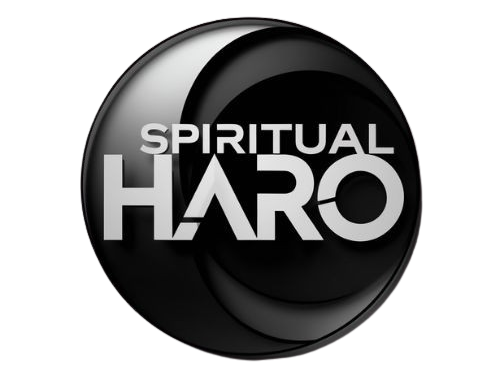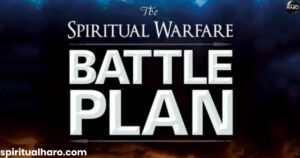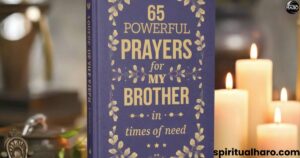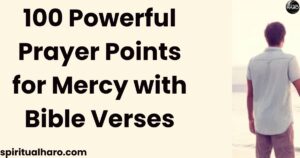The “Ultimate Guide: Best Order to Read the Bible for Beginners” is a helpful roadmap for anyone new to reading the Bible. With so many books and chapters, it can be overwhelming to know where to start. This guide provides a step-by-step approach to help you understand the Bible more clearly. Whether you’re reading for personal growth or spiritual learning, starting with the right books can make a big difference in your journey.
If you’re a beginner, you might wonder where to begin. The Bible is full of powerful stories and teachings, but knowing the right order will give you a better foundation. Instead of diving into complex books, a smart approach ensures that you grow in understanding while connecting with the message of the Bible.
This guide will walk you through the best order to read the Bible, starting with simpler books that introduce key themes. It will also help you navigate more challenging sections later on. By following this suggested order, you can deepen your faith and develop a strong understanding of God’s word over time.
Start with the Gospels (Matthew, Mark, Luke, and John) to get to know the life of Jesus.
Read Genesis first for an introduction to the creation story and the foundations of the Bible.
Follow with Psalms and Proverbs for wisdom, prayer, and praise.
Move to Acts to understand the early church and the spread of Christianity.
Study Romans to grasp key Christian beliefs and salvation.
Add James for practical Christian living and how to apply faith.
Read John again for a deeper understanding of Jesus’ divinity and love.
Approach Old Testament books like Ruth and Esther for inspiring stories of faith and courage.
Explore Isaiah for prophecies that point to Jesus as the Messiah.
Gradually dive into Revelation for insight into the future and the fulfillment of God’s plan.
Should You Read the Bible in Order?

Reading the Bible in order can seem like the most logical approach, but it’s not always the most beneficial for beginners. The Bible is made up of various books, each with its unique writing style, context, and purpose. Some books are historical, others are poetic, and some are letters written to early Christian communities. For those new to the Bible, starting with Genesis and reading straight through might overwhelm you. Instead, a more strategic reading plan could help you understand the foundational messages before diving into the complex parts.
When reading the Bible in order, you may encounter parts that are hard to grasp, especially in the Old Testament. Books like Leviticus, Numbers, or some of the more prophetic texts can be challenging for those unfamiliar with the context. These books can discourage new readers if they’re not introduced at the right time. Starting with the Gospels—Matthew, Mark, Luke, and John—gives you a clear picture of Jesus’ life and teachings, which are central to the Christian faith. It’s better to build a foundation of understanding before tackling more complex topics in the Old Testament.
Another reason why reading the Bible in order may not be the best strategy is that it can lead to confusion. The Old Testament is filled with various laws, rituals, and prophecies, which can be hard to understand without context. Many books of the Old Testament, such as the historical books, have already been partially referenced in the New Testament, where the message is clearer. So, for a beginner, it might be more effective to focus on the parts of the Bible that directly speak to salvation and the teachings of Jesus first. Once you have an understanding of the core message, the rest of the Bible will begin to make more sense.
On the other hand, reading the Bible in order isn’t entirely unhelpful. It does provide a comprehensive view of God’s work throughout history. Starting at Genesis allows you to see the creation story, the fall of humanity, and God’s covenant with Israel. Understanding these foundational moments can enrich your reading of the rest of the Bible. However, for someone just beginning their journey with the Bible, it’s often easier to start with books like the Gospels and some epistles before coming back to the Old Testament. This method prevents early frustration and sets you up for a more successful reading experience.
Ultimately, the decision to read the Bible in order depends on your goals and level of understanding. If you’re eager to explore the whole Bible, it can be helpful to follow a plan that starts with key texts and gradually moves through both the Old and New Testaments. It’s also important to read with a mindset of learning, seeking understanding, and being open to growth. With the right approach, you’ll gain a deeper understanding of God’s Word, regardless of the order you choose to read it in.
Related Guide:
10 Powerful Prayers for Healing a Broken Heart: Finding Comfort and Renewal in Christ
What is the Best Order to Read the Bible in a Year?

Reading the Bible in a year is an ambitious yet rewarding goal for many Christians. To ensure a balanced and manageable approach, it’s important to have a structured plan. The best order to read the Bible in a year usually includes both Old and New Testament readings daily, as well as select Psalms and Proverbs for wisdom. By alternating between the Old and New Testaments, readers can maintain a broad understanding of Scripture, gaining insights from both the history of God’s people and the teachings of Jesus. A good Bible reading plan incorporates a bit of each, helping you digest Scripture without feeling overwhelmed.
A typical plan to read the Bible in a year often starts with the Gospels, specifically Matthew, Mark, Luke, and John. These books give readers the foundation of Christian faith, focusing on the life, death, and resurrection of Jesus Christ. The Gospels not only provide the central message of Christianity but also teach valuable lessons on love, compassion, forgiveness, and salvation. Starting with these books helps beginners understand the core of their faith and prepares them for the rest of the Bible. After completing the Gospels, transitioning into the Acts of the Apostles provides insight into the early church’s growth and struggles, enriching the foundation laid in the Gospels.
Once you have a grasp on the life of Jesus and the early church, it’s wise to move into the Old Testament, beginning with Genesis. Genesis introduces the creation of the world, the fall of man, and God’s covenant with His people. From there, a structured reading plan might include books such as Exodus, Psalms, and Proverbs, which provide historical context, wisdom, and praise. Psalms and Proverbs offer spiritual enrichment that complements the heavier, narrative-focused books of the Old Testament. Psalms will provide prayers and songs of praise, while Proverbs gives practical guidance for daily living. These sections balance the heavier reading from the historical books, making it easier to digest.
As you progress through the Old Testament, it’s important to read the prophetic books, such as Isaiah, Jeremiah, and Ezekiel. These books can be challenging but are essential for understanding God’s justice, mercy, and future plans for His people. While reading the prophets, continue to check in with the New Testament letters, particularly from Paul and other apostles. These epistles provide clarity on how to live out the teachings of Jesus in the everyday world. Alternating between the Old and New Testaments this way ensures you won’t become bogged down by difficult passages while also keeping the message of Christ at the forefront of your reading.
Towards the end of the year, the best approach includes finishing the remaining historical books in the Old Testament, such as 1 & 2 Samuel, Kings, and Chronicles. These books connect the lessons from the Prophets with the unfolding story of God’s people. Finally, reading Revelation, the last book of the Bible, provides a powerful conclusion to your year-long journey. It connects everything you’ve learned and provides a vivid picture of God’s ultimate plan for creation. By following a well-structured plan, you will not only complete your goal of reading the Bible in a year but also grow in your understanding of God’s word, His promises, and His eternal love.
What Order to Read the Bible for Beginners?

Starting the Bible can feel like an overwhelming task for beginners due to its vast number of books and chapters. But there’s a way to make the process more digestible and meaningful. When beginning your journey through the Bible, it’s important to follow a guided approach that lays a solid foundation. A good starting point is reading the Gospels—Matthew, Mark, Luke, and John. These books focus on the life, teachings, and works of Jesus Christ, which are central to the Christian faith. By beginning here, you get an immediate understanding of who Jesus is and the core message of the Bible, setting the tone for everything you read afterward.
The Gospels offer a comprehensive look at the most important aspect of the Bible—the story of salvation. They present not just the life of Jesus but also His death and resurrection, which are essential to the Christian faith. Understanding these pivotal moments helps form the bedrock for interpreting the rest of the Bible. Reading all four Gospels gives a fuller picture of Jesus’ ministry from different perspectives. If you’re just starting out, don’t rush through them. Take your time, reflect on Jesus’ teachings, and apply them to your life as you read. This will provide you with lasting wisdom and the spiritual foundation needed for your Bible study.
After completing the Gospels, it’s time to move on to the Acts of the Apostles. This book is the bridge between the Gospels and the rest of the New Testament, showing how the early church grew and spread after Jesus’ resurrection. Acts is full of exciting stories, such as the apostles performing miracles, spreading the Gospel, and facing persecution. By reading Acts next, you gain an understanding of the early Christian church’s struggles and triumphs. It also introduces key figures like Peter and Paul, whose letters form much of the New Testament. Acts gives you a historical context that helps you better understand the teachings in the epistles that come later.
Once you have a good grasp of the Gospels and Acts, dive into the Pauline Epistles. These letters, written by the Apostle Paul, offer practical wisdom and teaching on Christian living, salvation, and the body of Christ. Start with Romans, as it’s a theological masterpiece that addresses foundational truths about faith, grace, and righteousness. Ephesians and Philippians provide more practical advice on Christian living, community, and joy despite hardship. Paul’s letters emphasize the application of God’s Word in everyday life, helping you live out the teachings you’ve encountered in the Gospels and Acts. They also lay out key doctrinal points that deepen your understanding of the New Testament.
Once you’ve gone through the Gospels, Acts, and the Pauline letters, it’s time to explore the Old Testament. While the Old Testament is longer and can sometimes seem more complex, starting with foundational books makes it easier to absorb. Begin with Genesis, the book of beginnings. Genesis tells the story of the creation of the world, the first humans, the fall of mankind, and the initial steps in God’s plan for redemption. Reading Genesis will provide the context for everything that follows in the Bible. It will also give you insight into God’s nature and His relationship with humanity from the very start.
Following Genesis, it’s helpful to read Exodus, the book that recounts the story of Israel’s escape from Egypt and the establishment of God’s covenant with His people. Exodus introduces the Ten Commandments, the law, and the significance of the tabernacle. It highlights God’s faithfulness to His people, even in their unfaithfulness. Exodus is key to understanding God’s character and His relationship with Israel, and it sets the stage for the rest of the Old Testament. As you read, reflect on how God’s faithfulness is demonstrated throughout these pages and how it relates to the new covenant through Jesus.
After Genesis and Exodus, read Psalms and Proverbs. Psalms is a collection of prayers, songs, and praises to God. It expresses the full range of human emotions—joy, sorrow, fear, gratitude—while pointing to God as the ultimate refuge and source of hope. Proverbs is full of wisdom on living a righteous and practical life. These books help balance the heavy narratives of the historical books and provide spiritual guidance, comfort, and encouragement. Reading Psalms and Proverbs alongside the historical books keeps your reading experience grounded in worship, praise, and practical living.
Following Psalms and Proverbs, read Ruth and Esther, two remarkable stories in the Old Testament that highlight faith, courage, and God’s providence. Ruth tells the story of a Moabite woman who becomes part of the lineage of David and ultimately the genealogy of Jesus. Esther is a powerful narrative about how a Jewish queen saves her people from destruction. These stories are filled with themes of divine intervention, loyalty, and bravery. They remind readers that even when things seem hopeless, God is at work behind the scenes to fulfill His purpose.
As you venture further into the Old Testament, begin to explore Isaiah, Jeremiah, and Ezekiel. These prophetic books offer deep insights into God’s plans for Israel and the world, especially the coming of the Messiah. Although these books are filled with challenging passages, they are vital for understanding God’s justice, mercy, and promises. The prophets also point directly to the fulfillment of God’s plan in the New Testament. Their messages remain powerful today, offering hope, warning, and encouragement for all who seek to follow God.
Once you’ve become familiar with the Old Testament’s foundational books, continue your study by reading Daniel. Daniel presents stories of courage and faith in the midst of exile, while also offering prophetic visions of the future. The themes of God’s sovereignty and faithfulness are clearly evident throughout Daniel’s narrative. His visions about future kingdoms and the coming of the Messiah provide a stunning glimpse into God’s plan for history. Daniel’s story encourages believers to trust in God’s timing and His ultimate victory over evil.
After finishing the major Old Testament prophets, focus on the minor prophets, which consist of 12 shorter books. While these books are often overlooked, they are just as important in understanding God’s message of justice, mercy, and hope. Hosea, Amos, and Micah address issues of sin and repentance, while others like Jonah and Zechariah highlight God’s love for all nations and His promise of restoration. These books may be shorter, but they are filled with timeless lessons for modern-day believers.
To complete your year of Bible reading, wrap up with Revelation. The final book of the Bible provides a thrilling and symbolic vision of the future, depicting the ultimate victory of good over evil. Revelation offers insight into the end times and God’s eternal reign. While some parts may be difficult to understand, it serves as a powerful reminder of the hope Christians have in Christ’s return. By reading Revelation at the end of your Bible journey, you’ll be reminded of the ultimate purpose of all Scripture: to point to God’s eternal plan of redemption and salvation through Jesus Christ.
By following this approach to reading the Bible, beginners can build a strong foundation for their faith and gain a deeper understanding of God’s Word. This plan offers a balanced mix of New and Old Testament readings, allowing for a comprehensive grasp of Scripture. Starting with the Gospels provides clarity on the core message of Christianity, while the Old Testament builds the historical and prophetic context. With this approach, you’ll be able to read through the Bible in a year while growing spiritually, learning practical life lessons, and deepening your relationship with God.
FAQ’s
What is the best starting point for beginners reading the Bible?
Begin with the Gospels (Matthew, Mark, Luke, and John) to understand the life and teachings of Jesus.
Why shouldn’t I start reading the Bible from the beginning?
Starting with Genesis can be overwhelming; it’s better to start with the Gospels for a clearer understanding of salvation.
How should I balance Old and New Testament readings?
Alternate between Old and New Testaments for a well-rounded understanding and to keep your reading fresh.
Should I read Psalms and Proverbs early on?
Yes, these books offer wisdom, comfort, and practical lessons, perfect for beginners.
When should I read Revelation?
Save Revelation for the end, as it ties everything together and reveals God’s ultimate plan for the future.
conclusion
following a structured order to read the Bible helps beginners gain a clear understanding of its teachings and message. Starting with the Gospels provides a strong foundation, offering insight into the life and work of Jesus Christ. By incorporating both Old and New Testament readings, you can appreciate the full scope of God’s plan and His covenant with humanity. Additionally, including wisdom books like Psalms and Proverbs along the way provides balance and practical guidance.
By progressing through the Bible with this approach, beginners will experience a more enriching and manageable study. Ultimately, the goal is to deepen your faith and knowledge, allowing God’s Word to guide and transform your life.

With five years of experience as a content writer, I specialize in creating engaging website content that drives traffic and builds brand loyalty. My expertise lies in crafting clear, compelling narratives that connect with audiences and optimize for search engines. I’m passionate about helping businesses articulate their unique value through well-researched blog posts, persuasive web copy, and impactful social media content. My goal is to transform ideas into captivating stories that not only inform but also inspire action.







